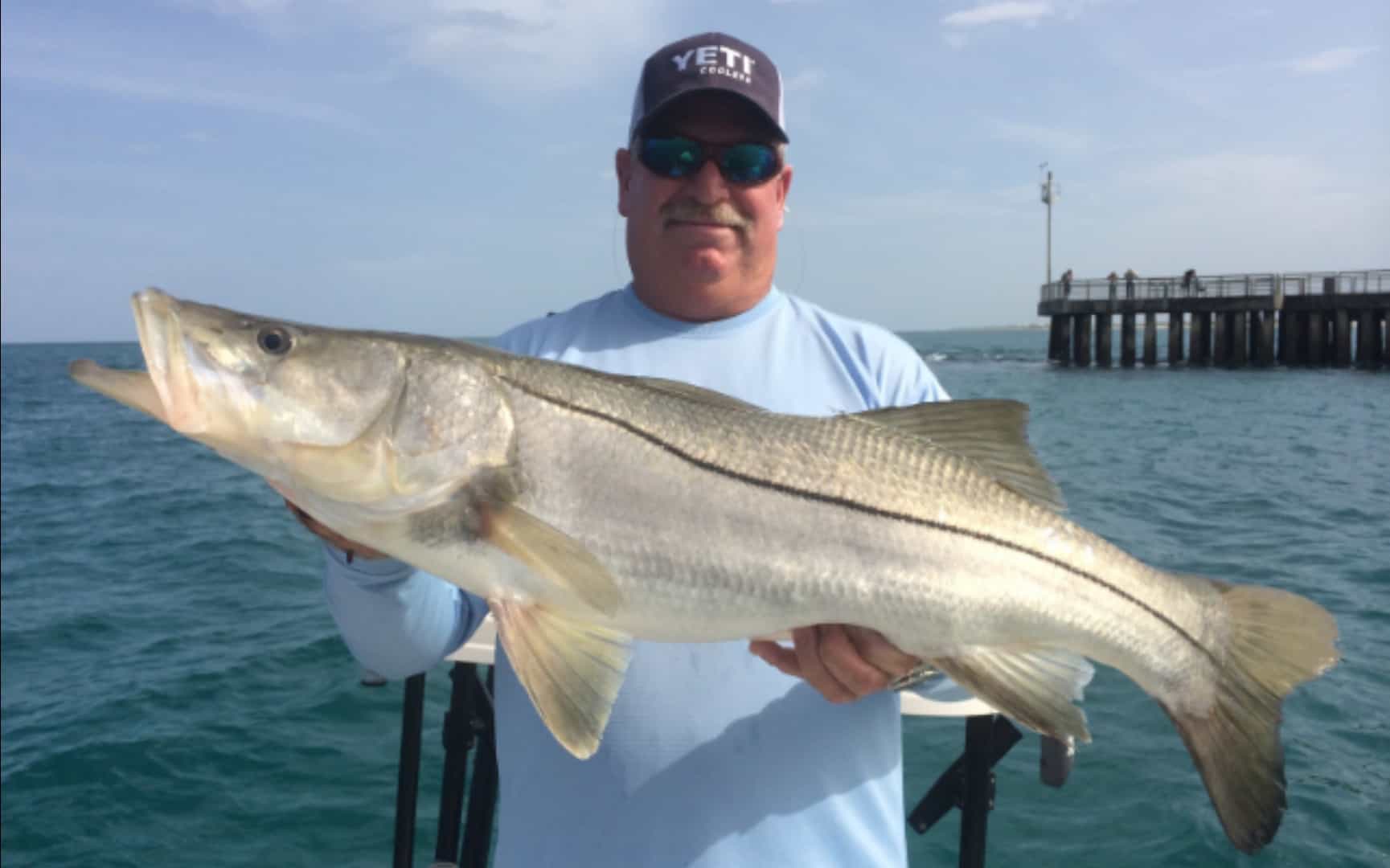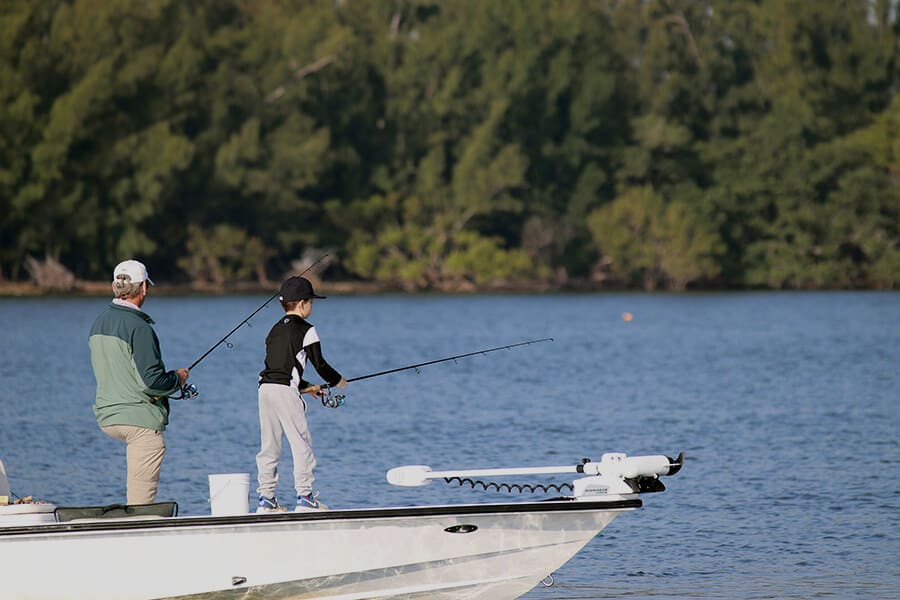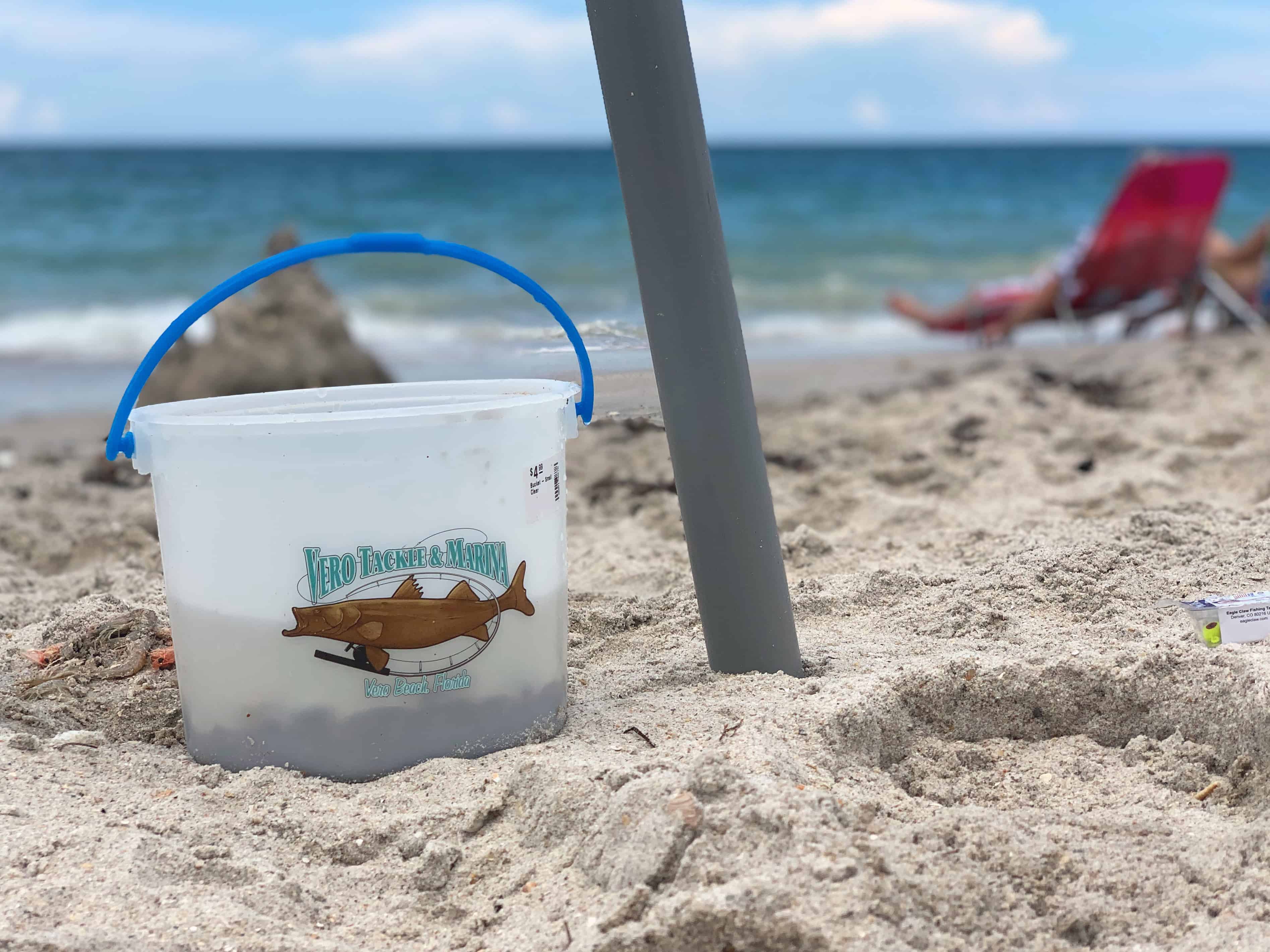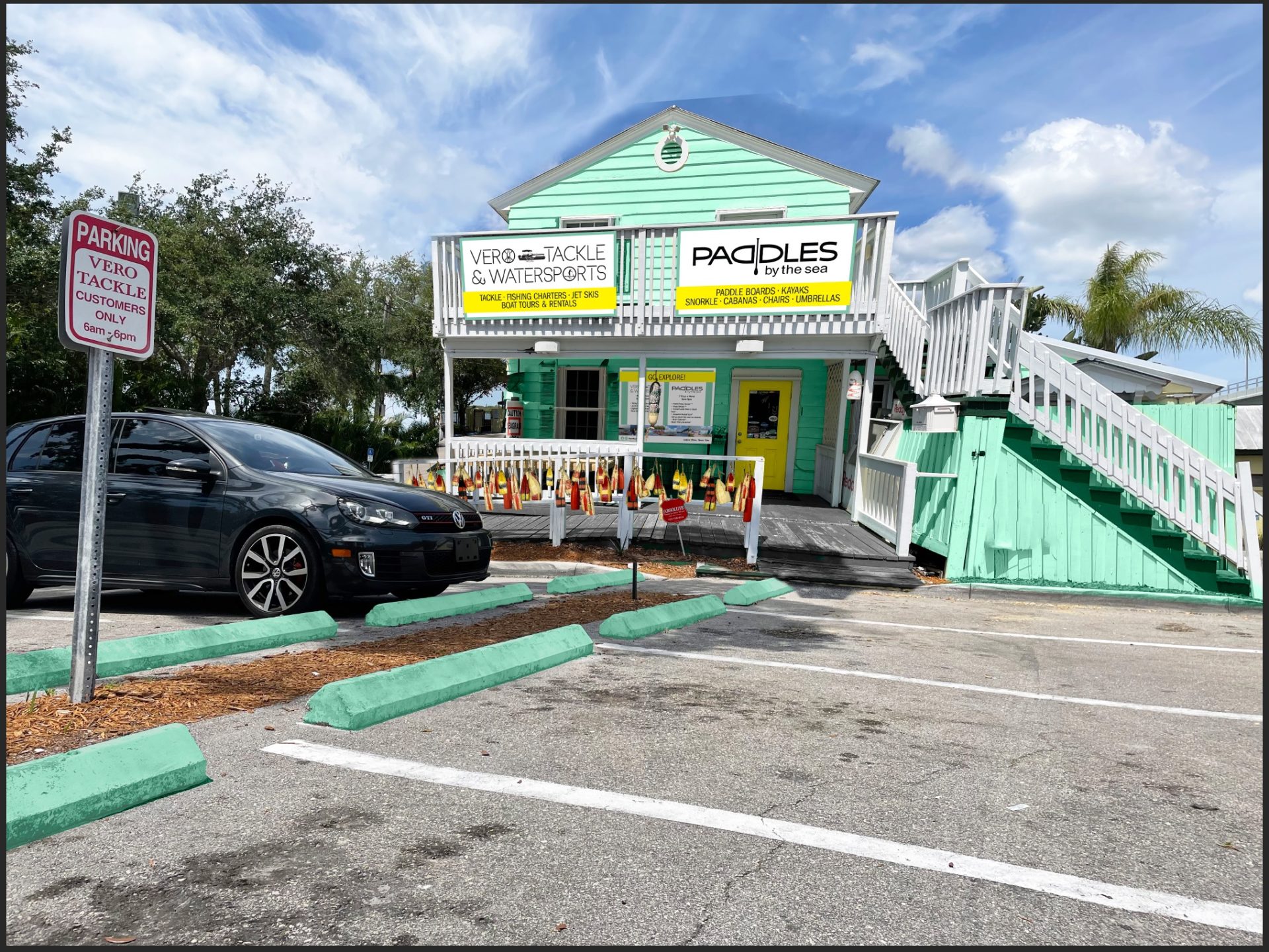
HOW TO TURN THE TIDES IN YOUR FAVOR AND LAND MORE FISH
When you first start fishing, knowing how to use tides to your advantage can seriously boost your chances of catching your target species. Read on to learn more about tides, how they can be used for surf fishing in Vero Beach and best practices for tide fishing in the Indian River Lagoon.

TIDES 101
Tides are caused by the gravitational forces of the sun and moon pulling from different positions across the earth. Because it’s closer to us, the moon has double the gravitational pull of the sun and a stronger influence on the tides. The positions of the sun and moon determine the strength of tides, which is most noticeable during full and new moons and the spring and fall equinoxes. Other factors, like the shapes of continents and their distances from each other, influence how the tides are present in a given area.
THE THREE TYPES OF TIDES
Vero Beach has semi-diurnal tides. Each day, we have two high tides and two low tides of roughly the same height occurring six hours apart. Semidiurnal tides are the most prevalent and can be observed across the entire east coast of the US as well as many other parts of the world.
The second most common type of tide is mixed. In areas like the gulf coast of Florida and the west coast of the US, there are two high and two low tides that are six hours apart, but the water levels differ between each high and each low.
Diurnal tides take place in only a few locations around the world. Territories that border the western side of the Gulf of Mexico, like the east coast of Texas, experience just one high and one low tide each day, roughly 12 hours apart.
BASICS OF FISHING THE TIDES
There are some general rules to fishing with the tides that can help anyone trying to plan a fishing session, no matter where they are or what type of tide is present.
Arguably the most important thing to keep in mind is that fish tend to prefer moving water for feeding. Typically, fishing an area when the water is slack is not going to be as productive as when there’s a good amount of movement.
Low tide prevents many of the larger, predatory fish from gaining access to highly desirable baitfish locations simply because the water isn’t deep or oxygenated enough to accommodate them. The incoming tide will get the predatory fish moving to those locations so they can begin feeding at high tide, and they’ll retreat on the outgoing tide to avoid getting trapped in shallow water.
While low tide is generally not the best for catching fish, it allows anglers to assess the terrain and look for structures such as rock pilings or sudden changes in depth that will be obscured during high tide. Scoping out an area during low tide can be a lot like making a cheat sheet for future fishing sessions.
SPRING & NEAP TIDES
Twice each month, coastal areas around the world will have a higher high tide and a lower low tide, and they’ll be coming in and going out faster than normal. This happens during new and full moons when the sun and moon align on either side of the earth and their gravitational forces combine. These tides are called spring tides due to the tide appearing to “spring” in and out. Because the water gets deeper and is moving faster, fishing during spring tides can have great results – except the day after a full moon, which is one of the worst times to fish. We recommend fishing the night of the full moon instead.
Seven days after a spring tide, the moon and sun will form a 90 degree angle with the earth, causing a lower high tide and a higher low tide. This small tidal range is called a neap tide. These tides generally result in slow and minimal water movement, which isn’t ideal for fishing for most species.

TIDES & SURF FISHING
Surf fishing is typically going to be most productive during the two hours leading up to high tide and for roughly one or two hours afterward. Be sure to bring weights between one to five ounces – they will come in handy to keep your bait or lure from getting swept away in the surf.
LOW TIDE
When the water level is low, it’s a great time to check out the beach to see what kind of structure is present (if any) and where it is in relation to the high tide waterline. This is ideal for days you intend to come back later on to fish during high tide.
HIGH TIDE
Most fish are going to be able to come right up to the water’s edge during high tide. As the tide comes in, predator species like snook, tarpon, sharks, mackerel, and bluefish will be chasing baitfish up towards the waterline, while species like pompano, whiting, and croakers will be going after crustaceans and other sand dwellers.

TIDES & THE INDIAN RIVER LAGOON
Fishing the tides gets trickier when it comes to the Indian River Lagoon. Wind is the main driver of the lagoon currents, but tidal influence can still be found in the areas close to inlets, like the ones located in Sebastian and Ft. Pierce.
WIND “TIDES”
Like tides, currents created by wind can force water to one side of the lagoon and increase the water level. In this instance, you’ll have the most luck fishing downwind near structures like mangrove edges or docks.
However, the wind that is too strong can create turbidity, stir up sediments, and obscure your bait or lure from the fish. In those conditions, it’s best to wait until another time or try a different location.
INLET TIDES
To fish the tides in the lagoon, you’ll want to go to or at least get close to either the Ft. Pierce Inlet or the Sebastian Inlet.
For the most part, the Indian River Lagoon is shallow with an average depth of 4 feet. When high tide rolls in, it allows larger predatory fish to access the shoreline and mangrove edges. They’ll be on the hunt for smaller species of crustaceans and juvenile fish that are taking shelter in the mangrove roots. Rock pilings, docks, and jetties are also common places for predator fish to lie while they wait for the tide to bring food their way.

HAVE QUESTIONS?
For a guaranteed good time and tips you can use for a lifetime, book an inshore fishing charter with one of our expert guides. They’ve been angling in the Indian River Lagoon and beyond for their entire lives and have years of invaluable experience to share with you.
If you’d prefer to learn on your own, come see us at Vero Tackle & Watersports. Our staff members are passionate about fishing and eager to help. Any time you stop by, you’ll get personalized advice for fishing the local waters and leave with the most effective gear for your target species.
Author: Lauren Hamers
